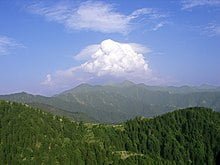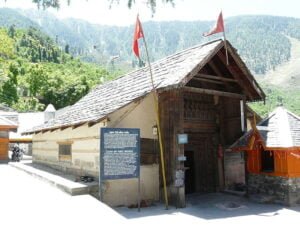No products in the cart.
CHAMBA- A DEEP DIVE INTO AN ARTISANAL LEGACY
Himachal Pradesh- Rich in natural beauty and delicious heritage offerings
Let’s forget for a while the obvious blandishments of a summer holiday in Shimla or Manali in Himachal Pradesh, one of India’s most abiding leisure time hot spots.
Instead, why don’t we turn our attention to another historic place, dripping in oodles of natural beauty and delicious heritage offerings. This is Chamba. In fact, Himachali folk singers are one with us when they tell you not to live in Shimla or Kasauli, but be sure to visit Chamba!
Truly, the benevolent hand of God has left its impress on this land for travellers to enjoy for centuries on end. Little wonder its biggest allure is the spiritual vibe which holds in its embrace its villages and urban spaces.
In the shadow of the mighty Dhauladhars, Chamba’s village settlements which cling to the lofty heights of its pinnacles and the deep valleys marked by rolling meadows, serve up picture postcard vignettes of delight. The scattering of temples and tiny shrines dotting the hillsides and valley floors underpin this mountain retreat’s deep-rooted immersion in its religious traditions.

Serene and seductive surrounds
Over time, what was established by Raja Sahil Verman in 920 CE as the new capital of his kingdom, Chamba Town has expanded its tentacles down the hillslopes to accommodate its burgeoning population; yet surprisingly constants that remain of the Chamba region are its uncrowded serenity and deep connection with Nature. Bharmour, as you may recollect used to be the old capital of the small but mighty kingdom of Chamba which held sway between the 6th and 19th century. From the rule of the Gupta kings (4th Century CE the Chamba region came under the sway of Thakurs and Ranas who considered themselves superior to the tribal Kolis and Khasas who ruled here. In circa 500 CE legendary Rajput hero, Maru is said to have shifted here and founded Brahampura (Bharmour) in the valley of the Budhil River, 75 km east of present Chamba town. With the rise of the Gurjara Pratiharas (7th Century CE) the Rajput dynasties assumed power. Raja Sahil Varman who subjugated the squabbling Rana rulers unified the territory, and chose to build a new capital in the more centrally located plateau in the lower Ravi valley. He named it after his daughter Champavati; over time it came to be known as Chamba.
Chamba fell under Kashmir, Mughal, and Sikh rule before becoming part of British India in 1846. In 1948 Chamba along with the princely states of Mandi-Suket and Sirmour merged to form old Himachal.
Visitors are enchanted by its sylvan beauty, the friendly locals, its artisanal expositions and unique culinary experiences. What blows them away too is how the villagers have continued to hold a steadfast connection with their heritage and traditions that go back deep into the mists of antiquity. You may well have heard of the iconic embroidered Chamba rumaal, but there are many other enticements which will embed themselves in your memory bank
The greater Chamba region brings its own immersive experience. For example, its dense forests and mountainous expanses offer habitats for exotic wild species such as the snow leopard, ibex, brown bear and musk deer.

Temple Trysts
Find yourself in the deep folds of antiquity in the calm and brooding presence of Lakshminarayan Temple established by Raja Sahil Verma in the 10th century. More shrines dedicated to Vishnu and Shiva were added to the complex over time. The ruler also commissioned the richly sculpted Champavati Temple, said to have been named after his favourite daughter.
The Brajeshwari Temple with its golden kalashes has the same impact on your sensibilities. Dedicated to Kali and made entirely of wood and beautiful carvings, the Chamunda Devi Temple, which nestles by the banks of the Baner River, was built in 1762 by Raja Umed Singh. During the Navratri festivities (March/April) the temple attracts many devotees. The 11th century Hari Rai Temple is remarkable for its beautifully crafted four-armed bronze Vishnu.
In the quiet of the mountain air, it’s easy to forget the present and try and weave yourself into the nuances of Chamba’s ancient spiritual fabric. The cultural splendour of these ancient shrines is a palpable connection with the local traditions and customs to this day.
Living Local Legends
Chaughan, Chamba’s grand public space serves as a gorgeous setting for public events, one of them being the annual Sui Mata Mela. Held in April in this lovely meadow, the mela is a lasting memorial to the wife of Sahil Verman, Rani Sunayana, who sacrificed herself by getting buried alive in order to end the drought that the people of Chamba, the king’s new capital, had been facing. The rain gods, placated by her deed, sent water to Chamba from the Sarotha stream through the aqueduct the king had built. Huge throngs, even today, gather to witness the procession of the idol of the queen housed in a palanquin during the ‘shobha yatra’ from the Akhand Chandi Palace to the Sui Mata Temple atop Shah Mandhar hill, which lies east of Chamba Town. The shrine was built by the king as a memorial to his beloved wife who chose to give up her life instead of her son’s as demanded by the oracles revealed by the priests.
The annual Minjar Fair held in July/August attracts huge crowds at the Chaughan to witness the gathering of the gods and goddesses from various temples of the Chamba valley who come to pay their respects to the main deity, Raghuvira. It also commemorates the victory of the Raja of Chamba Sahil Varman over the ruler of Trigarta (Kangra), in 935 CE. The festival is of great significance as it symbolizes Hindu-Muslim amity from the days when it was first celebrated. The festivities kick off after a Muslim Mirza family offers the first holy Minjar at the historic Laxminarayan Temple. Muslims also create the Minjars (silk tassels which represent the blossoming of the maize), as per ancient tradition. Originally the minjar was made with gota work, but now it’s done with silk thread. Minjars were offered to the victorious raja on his return from the battle with Kangra.
Another local legend has it that as people could not visit the Hari Rai Temple and Champavati temple because they were separated by the Ravi River, a yagna, performed by a priest at Chamapavati, resulted in the river changing its course thus enabling devotees to cross the channel to the Hari Rai Temple.
Ancestral Crafting Legacy
Chamba’s rulers were at one when it came to advancing the footprint of local crafts with their patronage. Step into the Bhuri Singh Museum to rest your gaze upon the rich collection of miniatures, murals and samples on display of the embroidered Chamba rumaal and Chamba slippers. Chamba rumaals typical embroidered with silk threads features mythological characters, animals and natural landscapes. The museum also has a good exhibition of old coins and weapons in addition to documents pertaining to Chamba’s rulers down the ages. Do spend precious moments enjoying the beautiful Kangra paintings and those of the Basholi and Chamba schools, murals and artifacts salvaged from the famous Rang Mahal Palace which was gutted. Raja Umed Singh of Chamba patronised the arts to such an extent that the Chamba School of Pahari painting reached its peak during his reign.
The Akhand Chandi Palace, now a college, also has a good collection of the privately held paintings owned by the rulers, but it is closed to the public. You can still see much of the original craftsmanship in the building
The shops around Chaughan market offer an excellent supply of various artisanal products made by the local craftsmen; apart from the famous rumaals you can pick up leather slippers, hats, shawl, stone and metal craft items– and the famous chilli paste known as Chamba chukh.
Excursions
You might like to visit Jhamwar (10km) renowned for its apple orchards or further away to Salooni (22km) a beautiful forest retreat. The popular hill station of Dalhousie is just 55km away, so it also makes a nice base for a decent stay option as Chamba itself has limited choices.
ACCOMODATION
A few big hotels and some budget properties are available across town
ACCESS
Air: The airport at Gaggal in Kangra is 170 km. Taxis/buses are available for your onward journey.
Rail: Pathankot is the nearest railhead (120 km) Onward journey by bus or cab.
Road: Direct Volvo and ordinary buses available from ISBT Kashmere Gate, in Delhi. The overnight bus journey from Delhi to Chamba is done in about 12 hours.
















